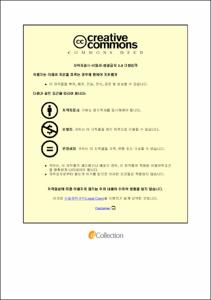간호사의 신체보호대 간호실무에 영향을 미치는 요인
- Alternative Title
- Factors Affecting the Nursing Practice on Physical Restraints Use of Nurses
- Abstract
- 본 연구는 간호사의 신체보호대 간호실무 정도를 파악하고, 그 영향요인을 파악하기 위해 시행되었다. 자료는 2023년 2월 20일부터 2월 25일까지 전국 병원급 이상 병원에 근무하며 신체호보대 적용 경험이 있는 간호사 236명을 대상으로 자가기입식 설문지로 조사하였다. 수집된 자료는 SPSS/WIN 27.0 프로그램을 이용하여 independent t-test, one-way ANOVA, Scheffe test, Pearson’s correlation coefficient, 선형 다중회귀 분석으로 분석하였다.
대상자의 신체보호대 관련 지식점수는 18점 만점에 11.42±3.61점이었고, 정답률은 63.44%이었다. 신체보호대 관련 태도는 5점 만점에 3.55±0.35점이었고, 신체보호대 간호실무 점수는 3점 만점에 2.46±0.30점이었다. 신체보호대 간호실무는 대상자의 직위(t=-3.554, p<.001), 인증 경험(t=2.909, p=.007), 임상 경력(F=4.799, p=.009), 신체보호대 관련 교육 경험(t=3.456, p=.001), 현 근무병원 신체보호대 관련 지침 유무(F=3.399, p=.001), 신체보호대 관련 지침의 필요성(t=2.404, p=.017)에서 통계적으로 유의한 차이가 있었다. 신체보호대 간호실무는 신체보호대 관련 지식(r=.460, p<.001), 태도(r=.345, p<.001)와 유의한 양의 상관관계를 나타냈다. 다중회귀 분석 결과 직위(β=.133, p=.046), 신체보호대 관련 지식(β=.203, p=.005), 신체보호대 관련 태도(β=.226, p<.001)가 간호실무에 통계적으로 유의한 영향요인으로 나타났으며 설명력은 27.5%이었다.
결과적으로 직위가 높고 신체보호대 관련 지식이 높을수록, 신체보호대에 대한 부정적인 태도를 가질수록 신체보호대 간호실무 점수가 높은 것으로 나타났다. 따라서 정기적으로 교육을 실시하고 신체보호대 간호 자료를 배포하여 간호지식을 향상시키고 신체보호대에 대한 부정적인 태도를 정립하는 것이 신체보호대 간호실무 향상과 신체보호대의 일상적인 사용을 감소시킬 수 있을 것으로 생각한다.|This study was conducted to investigate factors that affect nursing practice on physical restraints use of nurses. Participants were 236 nurses from general hospitals. Data were collected on February 20 to February 25 using self-administerd questionnaire. Collected data were analyzed using t-test, one-way ANOVA, Scheffe test, Pearson correlation coefficients, and multiple regression analysis with SPSS/WIN 27.0.
The average score of the knowledge about physical restraint application was 11.42±3.61 out of 18 questions, and the overall correct rate was 63.44%. The attitude score toward physical restraints application was 3.55±0.35 out of 5, and the nursing practice score of the physical restraint was 2.46±0.30 out of 3. There were significant differences in nursing practice on physical restraints according to nurses’ position (t=-3.554, p<.001), experience of hospital accreditation assessment (t=2.909, p=.007), clinical experience (F=4.799, p=.009), educational experience with physical restraint (t=3.456, p=.001), guidelines for physical restraint at the current work hospital (F=3.399, p=.001) and the need for guidelines related to physical restraint (t=2.404, p=.017). Nursing practice on physical restraints had significant correlations with knowledge related to physical restraints (r=.460, p<.001) and attitude related to physical restraints (r=.345, p<.001). Factors influencing Nursing practice on physical restraints were nurses’ position (β=.133, p=.046), knowledge related to physical restraints (β=.203, p=.005), and attitude related to physical restraints (β=.226, p<.001) which explained about 27.5% of total variance.
In conclusion, it was found that nurses with high positions, high knowledge related to physical restraint, and negative attitudes toward physical restraint had high scores in nursing practice. We suggest that continuing education program and distribute data related to proper use of physical restraint to improve nursing knowledge and have a negative attitude. It will improve nursing practice and reduce daily use rate of physical restraint.
- Issued Date
- 2023
- Awarded Date
- 2023-08
- Type
- Dissertation
- Alternative Author(s)
- Kim, Ha Ni
- Affiliation
- 울산대학교
- Department
- 산업대학원 임상전문간호학
- Advisor
- 최혜란
- Degree
- Master
- Publisher
- 울산대학교 산업대학원 임상전문간호학
- Language
- kor
- Rights
- 울산대학교 논문은 저작권에 의해 보호 받습니다.
- Appears in Collections:
- Industry > Professional Clinical Nursing
- 파일 목록
-
-
Download
 200000689296.pdf
기타 데이터 / 759.58 kB / Adobe PDF
200000689296.pdf
기타 데이터 / 759.58 kB / Adobe PDF
-
Items in Repository are protected by copyright, with all rights reserved, unless otherwise indicated.